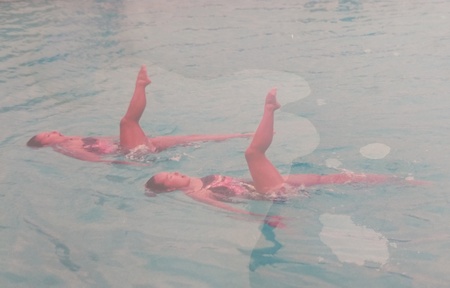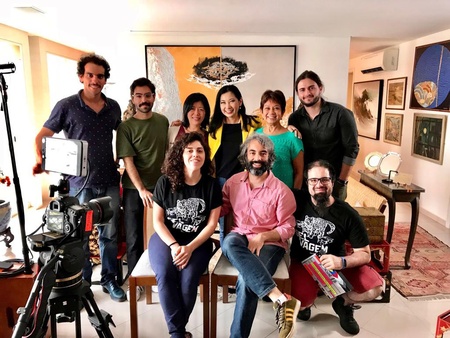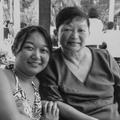When I found out that the web series NipoBrasileiros would be released on YouTube in April this year (2019), I was very curious. What approach would have been taken? Why was an independent producer interested in the topic?
Immediately, I researched Pietà Filmes e Produções - previously unknown to me. It is a production company that creates audiovisual content for cinema, TV and new media. According to them, “they look for stories with characters who are normally invisible”. It started to become clearer and to go further, I had the opportunity to contact them to find out more about the production. The interview was transcribed at the end of this article.
The 9-episode documentary series shows, through narratives, the construction of the image of professional “success” of Japanese-Brazilians. Careers such as Medicine and Law were covered, but the largest volume was dedicated to fields with less Nikkei representation, such as Dance, Literature, Journalism, Performing Arts. The producer's idea was to show how the characters found solutions to overcome stereotypes and ethnic barriers in our country, where racial issues still predominate over social issues.
When I see productions about us, Nikkei, I feel something like, “That's cool, someone portrayed our history, our sense of identity.” It was also with this motivation that I discovered Discover Nikkei and, combined with my love of writing, I started contributing here.
Communication channels, mainly digital, facilitate contact with Nikkei stories that resemble ours. They allow us to read and hear testimonies from those who have also felt divided or feel constantly. We love Brazil and Brazilians, but we have Japanese values and customs rooted in our way of thinking and acting. How to find a way to deal with this?
Despite the different professional areas shown in the series' episodes, all the characters went through obstacles and challenges on their journeys. Our internal search for understanding the feeling of mixing occurs, in parallel or at a different time, to the professional path. Personal reflections and different experiences make what we like and are interested in doing or deciding to undertake flourish, as in the case of Gustavo Tanaka and Mayura Okura, covered in episode 5.
For me, being Japanese-Brazilian means living divided between very different cultures, looking for a harmonious union between the two worlds. There is an intention to be a representative of the union, of what is best in each culture. We seek to act with the joy, spontaneity and solidarity of Brazil, but we also seek to practice Japanese teachings such as kindness, empathy and gratitude.
Speaking of gratitude, admirable and noble is the feeling of giving back to Brazilian society reported by doctor Emi Murano and lawyer Masato Ninomiya in episode 8. Yes, giving back to the same society that has labeled us since childhood, for example, by shouting in the street , "Neusa, open your eyes!!" (from “Japanese”) or often in our routines, calling us “Japa”, “china”.
The testimonies of the dancers and actors also reminded me that in synchronized swimming (a sport currently called “artistic swimming”), I went through the difficult personal recognition that my body type would not be favorable to going to the Olympics, no matter how much I dreamed. Interestingly, the person responsible for the sport, Meico Fujita, was Nikkei, which generated greater connectivity and maintained my hope of one day participating in world championships. After 3 years as an athlete as a teenager, realizing that my short height would possibly be a limitation was one of the reasons for giving up practicing it, as the intense training was aimed at competitions.
My background as a dekassegui and scholarship holder in Japan also helped me to recognize myself more clearly as a mix. These experiences showed that it would be easier to accept the Nikkei identity than to try to ignore it, in the sense of pretending that everything that refers to Japan is not my thing. It was also on these occasions that I was able to interact with other nationalities and Japanese descendants from other countries, which made the story and dedication to the profession of Ambassador Edmundo Fujita, character in the 1st episode, easily understandable.
As for the job market, in around 10 years of experience, I have seen that generalization is also very common in companies. This doesn't just happen to Nikkei, this pre-judgment is a human characteristic, from which we are hardly exempt. The fact is that we often receive labels without having had the chance to show ourselves. Society expects us to be “hardworking, dedicated, patient, polite.” It was a long process for me to clarify whether these characteristics were really mine or whether society dictated rules for these attitudes. Would it be accepted if I wanted to behave differently?
Amid the internal conflict of feeling “neither here nor there” or “more there than here”, I believe that our journey translates into a “beautiful thing”, an intense dedication to what we choose to do. As if we wanted to prove that within us there is something more relevant and significant than our slanted eyes and also in dedication to our immigrant ancestors, who went through hardships for our existence here today, we strive.
We came into the world to contribute something beyond what our faces show. That was the “beautiful thing” that the web series helped me complete.
Below, the interview with Pietà Filmes e Produções and its partners.
The intention of the web series is clear when it displays reports from Brazilian Nikkei about the difficulties and discoveries in their professions. How did the idea for this production come about? Could you tell us the history?
In 2017, UFPR professor Monica Setuyo Okamoto met ambassador Maria Ligaya Fujita and discovered that they coincidentally had similar projects.
Professor Monica was working with a university extension project entitled "Oral History Archive of Ethnic Minority Groups", which aims to create a space for oral reports from Japanese-Brazilians and Asians in general with the aim of debating, reflecting and question stereotypes about this ethnic-racial group, especially those that had little representation in some professional segments.
On the other hand, Ambassador Ligaya revealed that her late husband, Ambassador Edmundo Sussumu Fujita, had a very similar project and that she would like to make it happen.
Thus, the project of producing a documentary about Japanese-Brazilians who were pioneers in some professional fields, like Ambassador Fujita himself (the first Asian to enter the Itamaraty), officially began.
In 2018, professor Monica, who was participating in DOXA (Documentary Festival) in Vancouver, Canada, met Brazilian Vanessa Miho who, in turn, introduced us to the São Paulo production company, Pietà Filmes, by filmmaker Diego Costa.
From June 2018 to May 2019, professor Monica, UFPR students, ambassador Maria Ligaya, director Diego Costa and screenwriters Alexandre Nakahara and Pedro Tinen worked to ensure that this project came to fruition in record time.
There were countless meetings that Maria Ligaya and Monica had with the Pietà team so that the web series was configured in a way that met everyone's purposes: Ambassador Fujita, the UFPR academic project and Pietà's commercial and cinematographic vision. The partnership was great! A synchronicity of thoughts and desires made it all possible. It would not be possible without the expertise in this area of Pietà Filmes and the generosity of ambassador Maria Ligaya who sponsored the project. There was also cultural support from the Busan University of Foreign Studies, in South Korea; Japan Foundation and the Dean of Extension at UFPR.
How did the selection of interviewees and profession blocks occur?
It was during a meeting that we, Ligaya, Monica, Diego, Pedro and Alexandre decided on the central episodes. Due to the financial limitations of the project and the short time needed to complete it, we chose to make a selection, choosing Japanese-Brazilians from the Federal District, São Paulo and Paraná.
Each one knew someone with an interesting story and we chose people. We noticed that in some segments such as dance, journalism, literature and performing arts, representation was very low, almost negative.
So, through research, we collected some data. For example, according to Fuvest data from 2015, which listed the racial profile of candidates in the 10 most popular courses, we noticed that the presence of Asians in performing arts, for example, was 0, journalism 1.7%, in contrast to the overrepresentation of yellow students in traditional courses such as Medicine, Engineering and Law.
Has the work met expectations? What has the impact been like?
We finished the web series in May this year, so we still don't know how this project will impact Brazilian society, but so far the responses have been positive.
Some people in the Nikkei community have revealed to us that the web series NipoBrasileiros showed a side that is little commented on and even ignored by the Nikkei themselves and by Brazilian society: the ethnic barriers in some professional segments.
The participation of UFPR students (Andrey Mello, Eduardo Fabro, Hely Branco, Larissa Schmitz, Maico Wolfart, Sílvio Menezes and Willians de Castilho) in the project has also been interesting. They are not of Asian descent, but they gave us a view of the other side (of white, Afro and indigenous ethnicity). These students revealed to us that the project made them review their own ethnicity and began to reformulate some ideas they had about Asians.
Is there any intention to produce new episodes, about other fields of activity?
We, on the project team, would be very pleased to continue promoting new episodes, it is certainly on the horizon. However, we are already articulating a next project on the topic.
© 2019 Silvia Lumy Akioka









